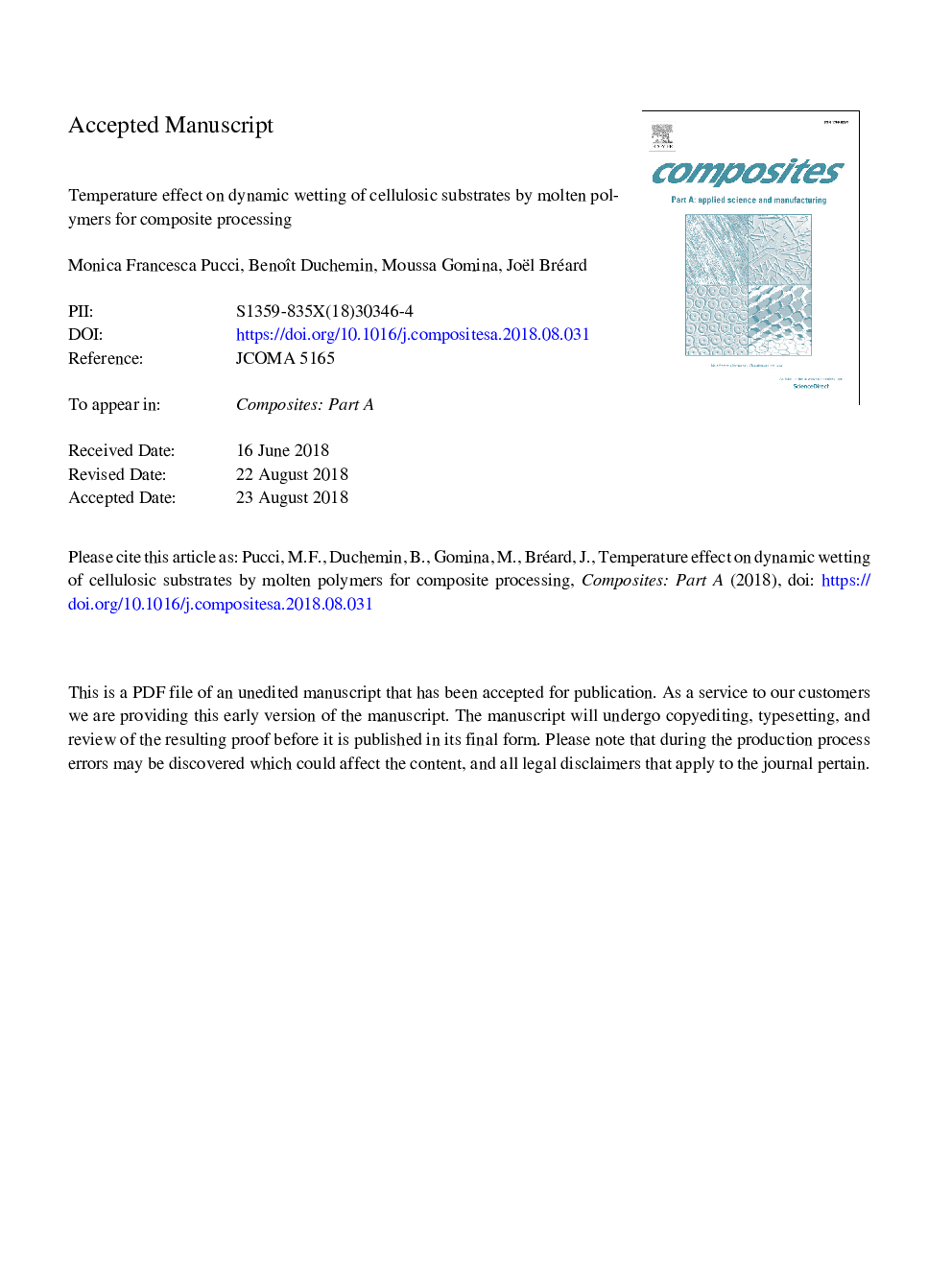| Article ID | Journal | Published Year | Pages | File Type |
|---|---|---|---|---|
| 10128353 | Composites Part A: Applied Science and Manufacturing | 2018 | 38 Pages |
Abstract
Impregnation of plant fibre reinforcements by a molten polymer involves many phenomena still poorly understood, related to the solid morphology and its surface chemistry, but also to the temperature effect on liquid properties and solid/liquid interactions. The present work focuses on the temperature effect on forced dynamic wetting, using the Wilhelmy method and two model materials: a cellulosic film and two totally wetting paraffin oils. The results show that the dynamic contact angle vs. the capillary number (Ca) plot appears as a master curve. This curve is split in two domains. The domain associated with Ca>10-3 is well described by the hydrodynamic approach. The domain with Ca<10-3 corresponds to wetting processes operating on a smaller scale, which are more sensitive to the physico-chemical heterogeneities of the substrate. This study addresses the mechanisms governing the capillary pressure, void formation and interface generation during composite manufacturing.
Related Topics
Physical Sciences and Engineering
Materials Science
Ceramics and Composites
Authors
Monica Francesca Pucci, Benoît Duchemin, Moussa Gomina, Joël Bréard,
